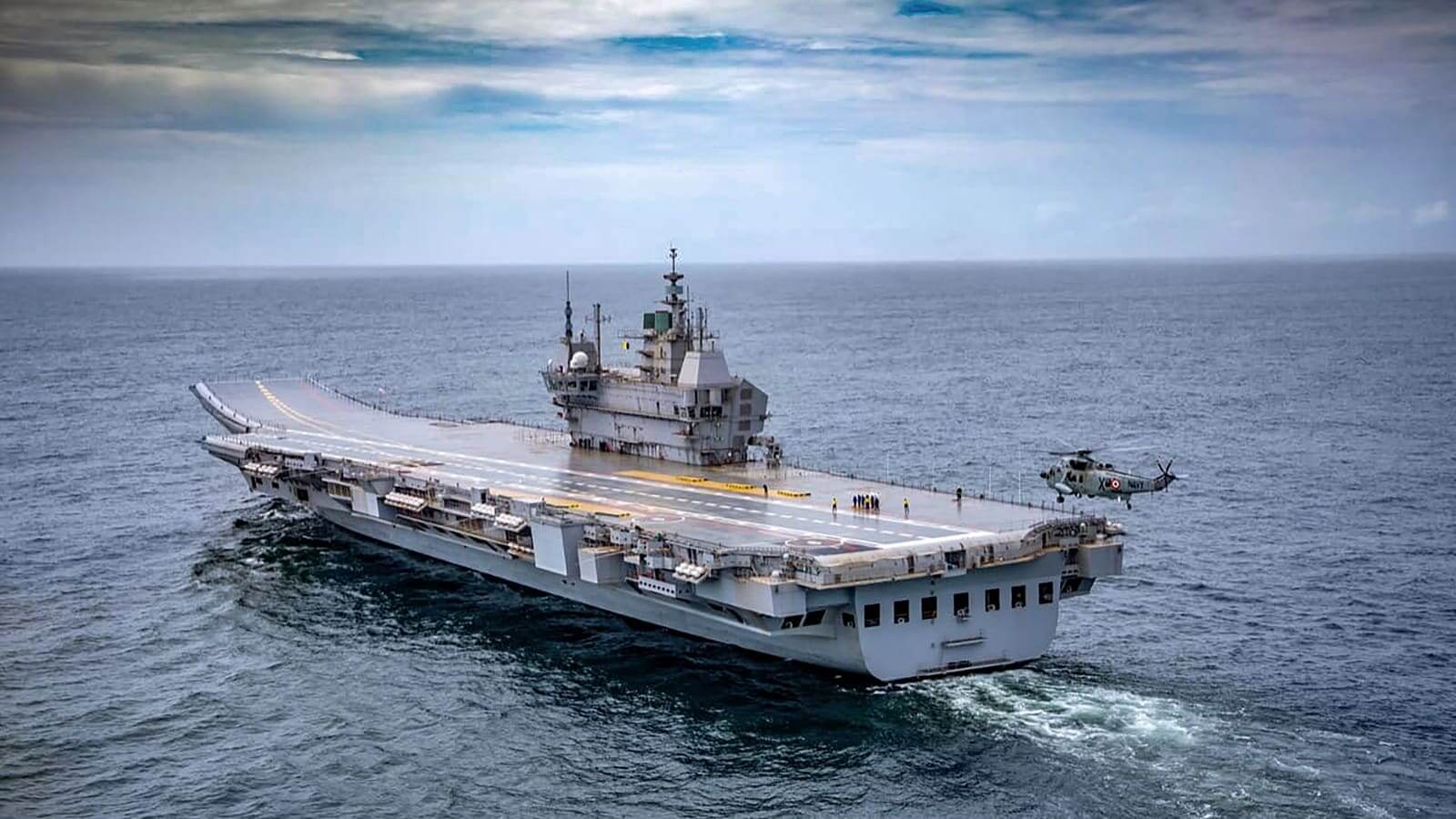The Indian Navy is preparing it’s aircraft carrier INS Vikramaditya to be battle-ready before the onset of monsoon. Fighter operations are scheduled to begin at the end of this month. The Navy is also planning to make its second aircraft carrier, INS Vikrant, fully operational after the monsoon season.
These measures are being taken as tensions are rising in the Indo-Pacific region due to China’s recent threats against the United States over Taiwan. The Indian Navy aims to project dominance in the Indian Ocean region and work closely with the navies of it’s QUAD alliance.
During the Naval Commanders’ meeting onboard INS Vikrant this week, discussions about the Indian Navy’s battle posture happened. A MiG-29 K fighter and Tejas-M landed on the deck of India’s latest aircraft carrier during this meeting. The new vessel, powered by GE-turbine engines and equipped with fighters and anti-submarine warfare helicopters, is ready to dominate the Indo-Pacific for the coming years.
The Indian Navy is currently conducting sea trials to make INS Vikrant fully battle-ready. Meanwhile, INS Vikramaditya will be handed over to the Indian Navy after a 15-month major overhaul by March 31. Fighter test landings and take-offs are expected to begin soon after the handover. The 45,000-ton aircraft carrier, along with its complement of MiG-29 K fighters, will be battle-ready before May 2023.
The operationalization of both aircraft carriers this year coincides with the rapid expansion of the People’s Liberation Army Navy’s war fleet. The PLA Navy is currently operating three aircraft carriers, with the latest, the Fujian, launched in June 2022. By 2025, China is expected to send carrier patrols into the Indian Ocean. However, the QUAD navies will possess enough firepower to deter any misadventure by the PLA Navy in the Indo-Pacific region.
The Narendra Modi government will have to make a decision on the acquisition of 26 fighters, including eight trainers, for INS Vikrant, as both aircraft carriers are set to be battle-ready this year. While US Boeing has offered to shift its F-18 manufacturing line to India, the other viable option will be the French Rafale-M fighter, which has operational commonality with the Indian Air Force’s Rafale fighters. The Indian Navy tested both fighters at its Goa-based shore test facility last year, and the report has been forwarded to the Department of Military Affairs for a final decision based on the government’s advice.
As the Xi Jinping regime continues threatening actions to take over Taiwan, the United States has also decided to replace its sole forwardly deployed carrier, the Japan-based USS Ronald Reagan, by 2025. The present warship will be replaced by USS George Washington, which will have new unmanned refueling drone technology that will allow the fighters on board to be refueled about 800 kilometers away from their nuclear-powered mother-ship. This will enable US aircraft carriers to operate beyond the reach of Chinese intermediate-range DF 21 “carrier killer” missiles and allow America to send its carrier-based fighters to contested areas from long distances with unmanned refuelers.
Additionally, India’s two aircraft carriers will patrol the Indo-Pacific, but their primary focus will be the Indian Ocean region, extending up to the eastern seaboard of Australia and Africa.
